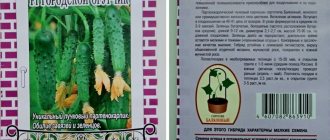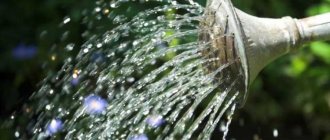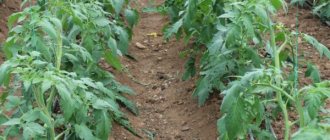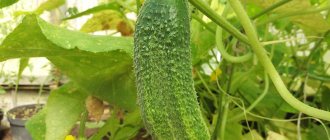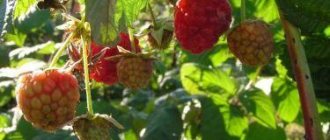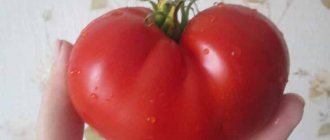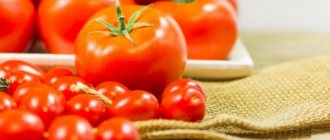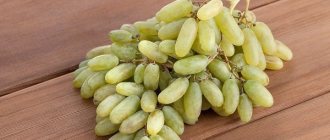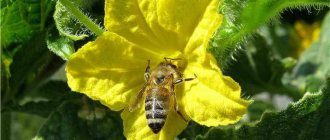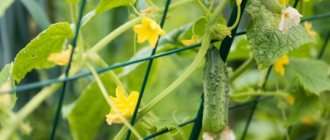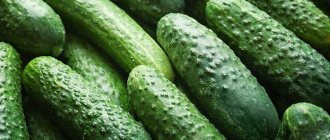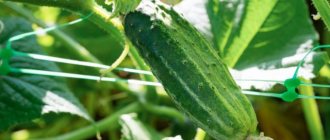Cucumber Ant f1 is not new to our gardens. Years of experience accumulated by summer residents allow us to classify it as one of the best hybrids for growing in greenhouses and in the open air. It has an excellent taste and high pickling qualities, and the plants are easy to care for.
| Landing location | Ripening time | Mode of application | Fruit length | Group | Fruit smoothness | Pollination method |
| Universal | Early ripening (35-45 days) | Universal | Medium - from 10 to 15 cm | Hybrid | Highly lumpy | Parthenocarpic |
History of the variety's creation
Over the years of its existence, breeders from the famous Russian agro have developed many varieties and hybrids of various vegetable crops, including cucumbers such as:
- Amur;
- Zozulya;
- Amursky and a number of others.
At the end of the last century, specialists from this agricultural company developed a new cucumber hybrid - Ant f1.
Description of cucumber Ant - video
Since this is not a variety, the company produces cucumber seeds each time by crossing certain vegetable crops, the names of which are kept secret, and it is impossible to collect seed material from vegetables in the garden.
After breeding, this hybrid cucumber was sent for variety testing. And after that, in 2003, the Ant cucumber was included in the Russian State Register.
The Ant hybrid was recommended for cultivation in the following Russian regions:
- North Caucasus;
- Volgo-Vyatka;
- Central Black Earth;
- Central;
- North-West;
- Severny.
For industrial purposes, it is not economically profitable to grow this hybrid, but in small garden plots and small farms, you can benefit from growing this cucumber when selling part or all of the crop.
Photo of Ant cucumber
It is optimal to plant the Ant cucumber in greenhouses or film greenhouses. However, in garden beds in open ground, the Ant cucumber variety bears fruit well not only in the south, but also in more northern regions.
Growing
Ant cucumbers from the manufacturer are quite a promising plant. Breeders have included properties that are significant for gardeners in 1 hybrid:
- high taste qualities;
- limited branching of the bush;
- reduced severity to atmospheric conditions;
- parthenocarpicity;
- resistance to common cucumber diseases;
- precocity;
- small volume and neat type of fruit;
- Suitable for direct and protected ground.
Seedling
Seedlings are sown in rich, loose soil mixture at the end of April. Ant cucumber seeds are moistened in advance. After 3-4 true leaves have appeared, the rudiments can be planted in open ground, covering the beds with film or in a greenhouse. Calculation of the number of roots, approximately 3-5 per 1 m2 in open ground and 2-3 in a greenhouse.
You can plant seeds instantly in the ground, but you need to wait for the soil to warm up well and cover the sprouts with film. Like any other cucumbers marked with the name "f1", they are not suitable for collecting seeds for the next season. The properties of hybrids are preserved only in the initial generation.
Bush formation
When planting, the plant is buried somewhat in order to create the strongest root system:
- The crossbreed has the property of not growing.
- The bush branches little and the side shoots do not stretch.
- The main stem is growing well and will require staking.
- Cucumbers of this hybrid are sensitive to light; if the vines are not tied, the plant will not produce an ovary in shaded areas.
- For the complete formation of the root system, self-mulching is preferable.
Watering
Water the cucumbers only with warm water, at least 24-25, and at least 1-2 times a day. Cold water does not allow the plant to develop as normal, overcooling the root system. Early ripening Ant cucumbers highly prefer a constantly moist base and choose drip watering. This is not difficult to do using plastic bottles.
Planting and growing beets in open ground - when to sow and how to properly care for beets
Self-mulching the soil with sawdust, peat or straw can help avoid rapid drying of the top cover and creates an excellent environment for earthworms to live.
Top dressing
Early ripening hybrids are capricious in nutrition. Cucumber f1 Ant is continuously fed at least 3 times per season. If there is no desire to feed with complex mineral fertilizers, it is possible to change to organic infusions:
- nettle;
- mullein;
- bird droppings.
Cucumber Ant F1: variety description
This hybrid cucumber is classified as an indeterminate variety with unlimited growth power of the central shoot. On average, the height of the central vine is about 1.7-1.8 m. The lateral stems are shorter and are formed in small quantities.
Tall vines must be tied to trellises when grown in greenhouse conditions, and to a special net that is stretched over the beds in the garden.
On a note!
The plant is an early ripening plant, from the appearance of friendly shoots to the harvesting of the first green Ant cucumbers it can take up to 45 days.
Based on the method of ovary formation, the variety is classified as parthenocarpic plants, therefore Ant cucumbers do not require the presence of pollinating insects. Flowers of a predominantly female type are formed on the vines.
The shoots are quite strong and quite leafy. The foliage is medium in size, slightly wrinkled, with wavy edges and fine serrations. Its color is deep emerald.
Flowering type: bunched. In short internodes, up to 4-7 ovaries are formed, collected in bunches.
Description of Ant cucumbers from the manufacturer:
Hybrid Ant produces gherkin-type fruits
. The shape of ripe greens is regular cylindrical, smooth with slight ribbing. Ripe fruits can be collected at the pickle and gherkin stage. Therefore, the length of cucumbers can be from 5 to 11 cm with an average diameter of about 3 cm.
Weight of ripe Ant gherkin – up to 100 g
. The skin is thin, crispy, covered with medium-sized tubercles with light, sharp spines. The color of the skin is rich emerald, with thin light stripes that run from the tip of the fruit to its middle.
The pulp is compact, with a characteristic crunch, tender. There are no voids in greenery. Since this cucumber is a hybrid, there is no bitterness in the fruit.
Good varieties of cucumbers:
Siberian Garland F1 Meringue F1 Cucumber Millionaire F1
The harvested crop can be taken to any distance, the greens have good keeping quality, and remain dense and crispy for a long time.
Landing
Seeds are sown for seedlings in April, in greenhouse soil - in May, and in open soil - at the end of May or in the first days of June. The seedling method is recommended in those regions where frosts end late.
Seedlings will require a nutritious, organic-enriched substrate. It can be purchased at the store or prepared from garden soil, sand, peat (1 part each) and humus (2 parts). Seedlings are sown in containers with a diameter of 10-12 cm, preferably peat ones, as they prevent injury to the root system when transplanting into the ground.
Before germination, seedlings are provided with heat of about +25-27 degrees. When the shoots appear, move the pots to a cooler room and provide them with at least 10 hours of daylight.
Twenty-day-old seedlings can be transplanted into a garden bed if the soil has warmed up sufficiently (at least +14).
To sow seeds directly into the soil, organic fertilizers are added to it in the fall and carefully dug up.
Main characteristics
The cucumber hybrid Ant is one of the ultra-early varieties; the first fruits on its vines are formed several days earlier than other early-ripening varieties.
However, summer residents should adhere to the basic rules for caring for this vegetable crop, since if agrotechnical measures are not followed, the yield sharply decreases, and the taste of ripe greens also deteriorates.
Productivity of cucumber variety Ant
This variety bears fruit well in open sunny areas; the fruits continue to ripen even with sharp temperature fluctuations.
From each square of area, up to 11-13 kg of ripe cucumbers of the Ant variety are usually collected. When grown in greenhouse conditions and following agricultural practices, the yield of Ant f1 cucumber can increase.
Important!
One of the features of this hybrid is that if there is a lack of sunlight for the flowers, fruits will not form on them. As a result, in cloudy weather or with strong shading, the yield of this hybrid decreases sharply.
Application area
This hybrid cucumber is universal: its fruits are used fresh and also for canning for the winter. Smooth gherkins are especially tasty when salted or pickled.
The best varieties of cucumbers:
TOP 15 best varieties of cucumbers for open ground
Gherkins and pickles of the Ant variety tolerate heat treatment well, while they retain their taste and appearance, and voids do not form inside.
Advantages and disadvantages of garden-balcony culture
Cucumber is popular due to its impressive list of benefits:
- The fruits can be used for various dishes: from salads to canned preparations for the winter.
- A cucumber can grow in a greenhouse or garden in an uncovered bed in spring and summer, and in winter it successfully bears fruit at home.
- The hybrid does not suffer from major diseases of vegetable crops.
- The taste characteristics received high marks from culinary specialists.
- Productivity is not tied to insect activity.
- The cucumber does not need to be pinched.
Disadvantages of the variety:
- to grow a hybrid, you need to buy new seeds every year;
- the plant should be tied up;
- Fruiting is significantly reduced in poor lighting.
Diseases and pests
Like most other cucumber hybrids, this vegetable crop is highly resistant to the following diseases:
- powdery mildew;
- olive spot;
- ordinary cucumber mosaic;
- brown spot;
- downy mildew.
Powdery mildew on cucumbers:
For this, the Ant cucumber is valued by vegetable growers - if the plant is not exposed to diseases, it means that you will not have to spend money on fungicidal preparations, and the plant will not weaken after the disease, and as a result its yield will not suffer.
Insect pests can attack this cucumber; you can fight them with folk remedies or use special preparations.
It must be remembered that most insecticides cannot be used during flowering, because they are destructive to bees and bumblebees, and also stop all treatments of cucumbers a couple of weeks before harvesting.
Advantages and disadvantages
From the description it may seem that Ant f1 is significantly inferior to other early varieties. However, its hardiness, rapid ripening and disease resistance make the hybrid an excellent alternative to cucumbers that are more prolific but less resistant to external factors.
pros
The ant can boast, first of all, of its versatility. It will grow and bear fruit even in harsh climatic conditions. Among the main advantages of Ant f1:
- resistance to temperature changes - cucumbers can easily survive night frosts or short droughts;
- undemanding to soil - cucumbers love black soil, but it will be good to bear fruit in other light, but not very nutritious soils;
- marketability - The ant, according to the description, rarely brings low-quality, spoiled fruits: most of the cucumber harvest will be smooth, shiny, fragrant and very attractive in appearance;
- good disease resistance - the variety is not afraid of such common diseases as powdery mildew, brown spot and cucumber mosaic.
Thus, Ant f1 can be called an excellent variety for beginning vegetable growers - not super-profitable, but not unprofitable either.
Minuses
Unfortunately, the variety is not without significant drawbacks. First of all, gardeners pay attention to these disadvantages:
- low yield - on problem soils Ant f1, judging by the description, will give no more than 10 kg/m², on fertile soils - a little more;
- parthenocarpicity - the cucumber does not produce seeds, planting material will have to be purchased anew each time;
- vulnerability to parasites - the gardener will have to compete for the harvest of cucumbers with aphids, mites, etc.;
- short fruiting period - unlike varieties such as Palchik, Ant bears fruit in a little more than 4-5 weeks.
Some gardeners believe that the modest, albeit neat appearance of this cucumber will not attract the attention of the buyer - but it may appeal to lovers of the classic small but wide-diameter vegetable.
Advantages
The Ant cucumber hybrid has many advantages:
- Only female flowers are formed on the shoots;
- the presence of bees or bumblebees is not required for pollination (the Ant cucumber variety is self-pollinating);
- the bushes of this cucumber are unpretentious;
- gherkin-type cucumbers form on the lashes;
- The Ant variety is distinguished by its ultra-early maturity;
- the formation of green grasses is not affected by negative weather conditions;
- gherkins of this hybrid have a pleasant taste and beautiful appearance;
- resistance to most infections.
[b]An interesting selection of cucumber varieties:
Chistye Prudy F1 Cucumber Snack Cucumber Gosha F1
This cucumber has no particular disadvantages, it just needs to be noted that the seed material of this hybrid has to be purchased in stores every year.
Diseases and parasites
Being resistant to most cucumber diseases, Ant is often attacked by parasitic insects. To avoid losing a significant part of the harvest, cucumber varieties are planted away from tomatoes and nightshades and carefully inspected for infection.
Aphid
A small pest is able to drink juices from the leaves and deprive the plant of nutrition. If aphids appear on cucumber bushes, you must first treat the beds with a mixture of potassium chloride and superphosphate. The lower part of Ant leaves is treated with it.
In more complex cases, chemicals are used: Fitoverm, Strela, etc. In autumn, the top layer of soil on the site is completely replaced with clean soil.
Spider mite
The presence of a pest on plantings can be unmistakably determined by the sticky whitish web entangling individual cucumber leaves.
Phosphorus supplements work well in preventing ticks. If the pest has already multiplied, Ant f1 bushes are sprayed with Iskra-BIO, Karbofos, etc.
Whitefly
This small white butterfly leaves scales and a sticky coating on cucumber leaves, sucking the juices out of them. Whiteflies are attracted to moist areas, especially in greenhouses.
A soap, garlic, or tobacco solution, which is applied with a brush to the leaves and stems of the cucumber, will help remove the pest from the area under the variety. In severe cases, it is necessary to resort to insecticides: Ascarin, Mospilan, Iskra, etc.
Cucumber Ant: planting seedlings and straight into the ground
This hybrid can be grown in seedlings or without seedlings.
Growing cucumber seedlings Ant
Planting Ant cucumber seeds for seedlings should be done approximately 25 days before the planned transplantation of seedlings to a permanent place. Usually sowing is carried out in the last ten days of April.
Cucumbers do not tolerate transplants well, as their root system is greatly damaged. To avoid picking, seed material is planted immediately in separate containers.
After germination, the plants are placed in a well-lit place. Regularly water and fertilize Ant cucumber seedlings with nitrogen-containing preparations at intervals of 12-14 days.
Plants are transplanted to a permanent location after the soil has warmed up to 15-16 degrees Celsius. Cucumber seedlings ready for transplanting must have at least 4 true leaves.
An unusual but effective way to germinate cucumber seeds - the Ant variety
A non-seedling way to grow cucumbers - planting directly in the ground
The seeds of the Ant cucumber hybrid should be planted in open ground only when the soil has warmed up sufficiently and the daily air temperature remains at +15 degrees Celsius and above.
No more than 4-5 plants should be planted on each square of area (minimum 3 cucumbers per m2).
Important!
Cucumbers planted in seedlings will produce harvests about a couple of weeks earlier than those sown with seeds in open ground.
Harvesting and storage
Ant cucumbers begin to bear fruit from June 10-20 and produce a harvest until the end of July. It is better to collect greens of this variety once every 3-4 days, as they ripen together. Cucumbers are cut in the evening, half an hour after watering. Judging by the description, the harvest is stored well - it can stay fresh in the refrigerator for up to one week. But it is still better to eat fresh greens, only collected from the bush.
Further care for Ant cucumber
Cucumber seedlings are transplanted into the soil by transferring them together with a lump of earth into prepared holes. Then the nutrient substrate is added, the soil is compacted and watering is carried out.
CUCUMBERS IN A GREENHOUSE made of polycarbonate FROM MAY TO OCTOBER in the Moscow region
In the future, cucumbers need to be regularly watered, fed and loosened the soil.
Irrigation regime
Water this vegetable crop in the evening with water heated in the sun strictly to the root zone. In this case, you need to ensure that drops of moisture do not fall on the leaf plates and shoots.
After watering, loosen the soil and remove weeds.
Feeding
For good fruiting of this hybrid, it is recommended to add organic matter and mineral fertilizers to the soil at intervals of approximately 10-12 days. The first feeding of Ant cucumbers is carried out a couple of weeks after transplanting the seedlings to a permanent place or after the first true leaf appears on the sprouts.
Cucumber feeding schedule
Organic and mineral fertilizers are not applied at the same time, but alternate with each other.
Features of care
Unpretentiousness and genetically high potential do not cancel the rules of agricultural technology. It is possible to get a rich harvest only with regular maintenance activities, which include not only watering, weeding and loosening. For active fruiting, the bushes must be shaped, periodically fed and, if necessary, protected from pest attacks.
Watering
Cucumbers are moistened as the soil surface dries. During the fruiting period, water the plants daily in the morning or evening with warm water. To avoid damaging the roots, use the watering can with a sprayer (the flow will not be too intense). Drip irrigation is organized in greenhouses. The latter not only saves the grower’s energy, but also reduces water consumption and prevents moisture stagnation.
Loosening and weeding
For full development, cucumbers need oxygen access to the root system. Systematic loosening allows for a “porous” soil structure that has good air permeability. After moistening, they are carried out to a shallow depth (up to 3 cm) so as not to damage the superficial root system. At the same time, weeds are removed. To increase the interval between loosening and weeding, the tree trunk circles are mulched. To do this, use compost, peat or sawdust. When choosing a suitable material for mulch, take into account the acidity of the soil.
Feeding and fertilizers
"Ant F1" responds well to additional nutrition. Cucumber plantings are fed four times a season. For the first feeding, nitrogen-containing fertilizers are used - 15 days after emergence or planting of seedlings. The second and third application of nutrients occurs during flowering and fruiting, when plants need phosphorus and potassium. The universal composition is nitroammophoska. The last feeding is foliar. In the middle of the harvest, the bushes are sprayed over the leaves with a solution of wood ash.
Cucumber Ant: reviews from those who planted
Reviews of the Ant cucumber hybrid are usually positive.
Valentina, 40 years old, Krasnodar region: I thought for a long time whether it was worth growing vegetable hybrids on the plot - I’m used to collecting my seeds from plants for further planting, but buying them every year is not for me. However, I planted the Ant hybrid and was satisfied. The variety is productive, unpretentious, the fruits are suitable for eating and canning. I will continue to grow it in the future.
Natalya, 44 years old, Penza region: My husband and I have been growing cucumbers for sale for many years. At the same time, we try to grow early-ripening varieties of cucumbers. For several years now, we have been growing only the Ant cucumber for sale, which ripens earlier than many other early-ripening varieties. And for food, we plant a couple of other varieties with different ripening periods. Hybrid Ant can be grown in properly equipped polycarbonate greenhouses all year round, so this variety is very economically profitable.
Maria, 50 years old, Samara region: I grow the Ant variety, since it is the fastest-ripening and highest-yielding cucumber that I have planted before. The only disadvantage of the hybrid is the need to buy seeds for planting every year, but now almost no one collects their own from the garden, it’s easier to buy.
This cucumber can be grown almost throughout Russia. However, this hybrid does not tolerate heat and drought well, so growing the Ant cucumber in the south of the country is not recommended. Housewives are especially pleased with this variety - after all, Ant gherkins are perfect for pickling and pickling.
Reviews
Dmitry, 52 years old
Gardening is my hobby. Every year I try to buy a new variety of cucumbers. Ant planted it 3 years ago. As it turned out, it has the following advantages: ease of care, disease resistance and pleasant taste. For the first time in many years, I settled on one hybrid, and I don’t want to change it to any other. Before planting, as well as during the growing season, I scatter mustard on the ground, so the bushes have never gotten sick during all this time.
Anastasia, 34 years old
I bought Ant for the first time last year. The manufacturer promised high seed germination and did not deceive. There were many shoots, and the bushes grew strong and healthy. I was also pleased with the unpretentiousness of the variety and its high yield. Gherkins grow beautiful and tasty. I planted cucumbers in the place where green manure grew - phacelia. The bushes of the crop in this place developed well and bore fruit. During the entire season they never got sick, despite the fact that the weather often deteriorated.
The ant is suitable for cultivation both for personal purposes and on farms. It has the following advantages: no need for pollination, unpretentiousness, high yield, short fruit, early ripening, and also a pleasant taste of greens. Among the disadvantages is the inability to use homemade seeds. This minus is completely outweighed by numerous advantages.
The best varieties of cucumbers (video)
“Ant F1” is famous not only for its tasty and beautiful cucumbers (dark green fruits with large spikes look very good in jars). In addition, the plants are characterized by weak branching of shoots, take up very little space and do not grow, which is important for small garden plots.
The most common diseases of cucumbers include damage caused by fungal organisms. Among these diseases are:
- anthracnose;
- Alternaria blight;
- peronosporosis;
- cladosporiosis;
- rhizoctoniasis;
- powdery mildew;
- root rot, etc.
For the most part, these diseases manifest themselves as yellow or gray spots on the leaves, on the reverse side of which mycelium (mycelium) grows.
Ripening cucumbers in a greenhouse
Some fungi also attack ripening fruits. Diseases lead to drying of leaves, rotting of roots and fruits.
Measures to combat fungal infections of cucumbers include soil disinfection, control of temperature and humidity levels in the air and soil, and preventive treatment with fungicidal (antifungal) and bacterial preparations.
Ant F1 has a fairly high resistance to almost all major pests of cucumber crops.
While watching the video you will learn about growing cucumbers.
Hybrid cucumbers of the Ant f1 variety definitely deserve a presence in gardeners' beds due to their taste, the benefits of the fruit and ease of care.
Noticed a mistake? Select it and press Ctrl Enter to let us know.
Dangerous tandem of aphids and ants
In the summer, aphids and ants form entire communities. They are built on the basis of mutual benefit. Worker ants perform the functions of shepherds. They protect aphid colonies from ladybugs, ground beetles, and other insects. In return, they receive food from the aphids - honeydew. Honeydew is a sweet secretion.
The aphid secretes them in the form of droplets as soon as the ant tickles it with its antennae. And it turns out a sweet liquid from the juice of plants. Adults feed on it, piercing leaves and stems with their thin proboscis.
At dachas and in greenhouses, black and yellow varieties of ants enter into symbiosis with aphids. They store honeydew for a hard day. The individuals living inside the nest act as storage facilities. They never leave it; their crop serves as a reservoir for sugary liquid. For the winter, aphids are brought inside the ant's home. Under protection, aphids multiply rapidly, causing great damage to cucumbers.
